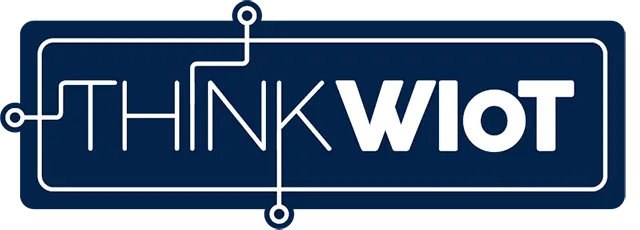Wi-Fi HaLow: Low Power, Long Range
Wi-Fi HaLow bridges the gap between low-power wide-area networks and traditional Wi-Fi by offering a scalable, secure, and IP-native wireless connectivity solution optimized for long-range IoT deployments in diverse industrial and smart infrastructure environments.
- Published: June 11, 2025
- By: Anja Van Bocxlaer
- Read: 8 min
- Wi-Fi HaLow operates in sub-GHz bands (868 MHz in Europe, 915 MHz in North America) enabling long-range communication up to 1 km urban and beyond in rural areas.
- It supports native IP connectivity with standard Wi-Fi security (WPA3), facilitating direct integration with existing networks without proprietary gateways.
- HaLow delivers low power consumption suitable for multi-year battery operation, high scalability exceeding 8,000 devices per access point, and moderate throughput from 150 kbps to 15 Mbps.
- Applications include agriculture sensor networks, industrial predictive maintenance, smart city infrastructure, healthcare monitoring, and smart building energy management.
- While adoption is growing, challenges include device availability, antenna size constraints, certification maturity, and regulatory limits that impact throughput and duty cycles, especially in Europe.

What Is Wi-Fi HaLow and Why Does It Matter?
Wi-Fi HaLow is a sub-GHz extension of the Wi-Fi family. It operates in unlicensed bands below 1 GHz (typically 868 MHz in Europe and 915 MHz in North America) — frequencies known for longer propagation, better wall penetration, and reduced interference in industrial environments.
Unlike protocols such as LoRaWAN or Zigbee, Wi-Fi HaLow supports native IP (TCP/IP) communication, making it inherently compatible with existing internet infrastructure. At the same time, it brings substantial benefits:
Long Range: Up to 1 kilometer (urban), more in rural open-field scenarios
Low Power: Multi-year operation with battery-powered nodes
Scalability: Up to 8,000+ devices per access point
Throughput: 150 kbps to 15 Mbps, depending on modulation and range
Security: WPA3-level encryption and authentication
Latency: Low enough for many industrial and control applications
It combines the range and power profile of LPWAN technologies (like LoRaWAN or NB-IoT) with the flexibility and IP stack of Wi-Fi, making it a uniquely balanced protocol in the IoT landscape.
Real-World Applications and Use Cases
Agriculture & Environmental Monitoring
HaLow is ideal for wide-area deployments where power and coverage are critical. Farms, vineyards, and irrigation systems are using Wi-Fi HaLow for:
Soil condition sensors
Weather stations
Crop monitoring systems
Water usage management
These sensors often operate in the middle of fields or greenhouses — well outside the reach of traditional Wi-Fi, and with limited power sources. HaLow’s long range and energy efficiency make it possible to collect environmental data with minimal infrastructure.
Read also:
AgriLink in Morocco: Smart Irrigation Tackles Water Scarcity (Limits of LoRaWAN for Automation)
Industrial IoT (IIoT)
In factories, warehouses, and utilities, Wi-Fi HaLow enables:
Predictive maintenance through vibration and temperature sensors
Mobile robot communication in metal-dense environments
Condition monitoring for pumps, compressors, and conveyors
Wireless connection of distributed PLCs or SCADA subsystems
Thanks to sub-GHz propagation, HaLow performs better than 2.4 GHz or 5 GHz Wi-Fi in steel-heavy structures and underground tunnels. And since it's IP-native, it integrates directly with existing enterprise networks.
Smart Buildings and Smart Cities
HaLow is a strong candidate for:
Parking sensors
Smart street lighting
Waste bin monitoring
Public safety systems (e.g. emergency call stations)
HVAC and energy management in smart buildings
With fewer access points needed to cover large buildings or outdoor areas, Wi-Fi HaLow reduces network density, installation complexity, and maintenance costs.
Healthcare and Residential IoT
In smart homes and medical facilities, Wi-Fi HaLow can be used for:
Patient monitoring (vital signs, fall detection)
Wireless medical devices
Home automation (locks, thermostats, leak detectors)
Unlike BLE or Zigbee, HaLow provides direct cloud connectivity without a proprietary gateway.
Hardware – Chips, Modules, and Devices
While the HaLow standard was ratified in 2016, hardware maturity has picked up in recent years, with increasing availability of commercial-grade chipsets, modules, and developer platforms.
Notable Hardware Providers
Morse Micro (Australia) – Market leader in Wi-Fi HaLow chipsets, including MM6108 and MM6104, with ultra-long range and sub-1 GHz radio
Newracom – Offers Wi-Fi HaLow SoCs and reference designs
Silex Technology – Produces HaLow development kits and modules based on Newracom chipsets
Edgecore – Developing industrial-grade HaLow APs and gateways
Device Types Emerging
Wi-Fi HaLow USB dongles and development boards
Industrial sensor nodes with embedded HaLow modules
Access points for indoor and outdoor long-range coverage
Gateways that bridge HaLow IoT networks to Ethernet or cloud
Antenna Design Considerations
Sub-GHz communication requires larger antennas compared to 2.4 GHz Wi-Fi. That means integrating HaLow into compact consumer products requires careful design — especially when balancing performance with form factor.
However, in industrial and agricultural use cases, where space is less of a constraint, HaLow modules and antennas fit well into enclosures and sensor housings.
Read also:
Wi-Fi HaLow Revolutionizes Long-Range IoT Across Europe in 2025 (16 km of Real-World Connectivity)
World's First Wi-Fi CERTIFIED HaLow Chip with Integrated Edge AI (A Leap Forward for Edge-Centric IoT)
Global Frequency-Band Overview
Wi‑Fi HaLow operates in license-exempt sub‑1 GHz ISM bands, which vary by region due to local spectrum regulations. Below is a summary of frequency availability across major global markets:
United States: 902–928 MHz
Supports wide channels (1, 2, 4, 8, 16 MHz); high throughput up to ~40 Mbps.Europe: 863–868 MHz
Highly regulated with narrow 1–2 MHz channels; limited to ~5–7 MHz total spectrum. Subject to duty cycle limitations (typically 1% or up to 2.8% with LBT). Data rates are significantly lower than in other regions.Africa:
Regulations vary by country, but many adopt ETSI-aligned rules similar to Europe. Most commonly allowed band is 863–870 MHz, with similar duty-cycle and channel constraints. Some North African countries (e.g., Morocco, Egypt) may follow CEPT/ITU recommendations.Australia & New Zealand: 915–928 MHz
Similar to the U.S., with support for wide channels and higher throughput.China: 755–787 MHz
Specific to local regulations; less common for Wi‑Fi HaLow devices today.Japan: 916.5–927.5 MHz
1 MHz channels; up to 11 channels allowed.South Korea: 917.5–923.5 MHz
Allows 1, 2, and 4 MHz channels.Singapore:
Two authorized bands: 866–869 MHz (for 1–2 MHz channels) and 920–925 MHz (for 1–4 MHz channels). Supports low-power, narrowband applications.
Wi-Fi HaLow in the Broader Connectivity Ecosystem
IoT deployments today have no shortage of connectivity options — each with its own strengths and limitations. Let’s take a closer look at how Wi-Fi HaLow compares to other major technologies, not in isolation, but through use case alignment and technical fit.
Compared to Classic Wi-Fi (2.4/5 GHz)
Wi-Fi HaLow offers much longer range and significantly lower power consumption, making it far better suited for battery-powered or widely distributed sensors. While classic Wi-Fi shines in high-bandwidth use cases like video streaming or office networks, it is not ideal for industrial IoT where coverage and energy efficiency are critical. HaLow bridges that gap — with native IP compatibility, but optimized for IoT constraints.
Compared to LoRaWAN
LoRaWAN reaches further in rural or line-of-sight deployments, but sacrifices bandwidth and standardization. Its payload size is limited, its latency is higher, and it lacks native IP support, requiring gateways and translation layers. HaLow, by contrast, offers faster, more reliable communication and can support firmware updates, encryption, and real-time interaction — all natively over Wi-Fi architecture.
Read also: Wi-Fi HaLow Emerges as a Powerful Alternative to LoRaWAN
Compared to NB-IoT and LTE-M
Cellular LPWANs like NB-IoT are well-suited for applications with nationwide coverage, such as smart metering. However, they depend on carrier networks, involve SIM provisioning, and may incur recurring costs. HaLow gives companies full control over infrastructure, making it ideal for private industrial deployments, especially when edge computing and local networks are involved.
Compared to Bluetooth LE
Bluetooth LE (BLE) works well for short-range, high-efficiency consumer use cases like wearables or smart home gadgets. But in sprawling factory floors, farms, or smart cities, BLE quickly reaches its limits. HaLow steps in with hundredfold greater range, more robust security, and multi-device scalability — all without relying on a smartphone as a central hub.
Compared to Zigbee and Thread
Both Zigbee and Thread offer mesh-based local networks, great for lighting, HVAC, or smart home control. But they come with custom stacks and often require dedicated gateways. HaLow avoids this overhead by supporting direct IP communication, which means smoother integration with cloud platforms and no protocol translation.
Key Differentiators of Wi-Fi HaLow
Real IP-native connectivity: no need for protocol bridges or translation layers
No carrier dependency: unlike NB-IoT or LTE-M, HaLow runs on unlicensed spectrum
Security and encryption: built on modern Wi-Fi frameworks like WPA3
Better coexistence: less interference from 2.4 GHz congestion
Fewer APs needed: longer range lowers total infrastructure cost
Challenges and Outlook
Adoption Curve: HaLow is still building its ecosystem; device availability is limited compared to LoRa or BLE
Certification: The Wi-Fi Alliance only began certifying HaLow devices in 2021
Antenna size and form factor can limit use in very compact designs
However, momentum is growing — especially in regions like Europe, Asia, and North America, where smart infrastructure and edge intelligence are expanding rapidly.
Implications for IoT Deployments in Europe
Due to the narrow spectrum and regulatory limits, European Wi‑Fi HaLow systems face significant constraints:
Low throughput (only up to ~8–10 Mbps achievable with 2 MHz channels) compared to tens of Mbps elsewhere
Strict duty-cycle limits impede high-frequency packet transmissions.
Competing technologies like LoRaWAN may outpace HaLow in Europe on cost and practicality for many IoT use cases.
Vendors like Quectel and Morse Micro are actively adapting their modules (CE‐certified) and firmware to the European regulation environment
Wi-Fi HaLow as the IP Backbone of Tomorrow's IoT
Wi-Fi HaLow fills a critical gap in the wireless connectivity stack. It’s long-range, low-power, secure, IP-native, and robust in challenging environments. Whether in agriculture, industry, smart buildings, or municipal infrastructure, HaLow is emerging as a strong contender to underpin the next wave of intelligent IoT deployments.
While other technologies may still dominate in niche applications, HaLow offers the versatility and scalability needed for projects that must balance cost-efficiency, security, interoperability, and coverage — especially where legacy Wi-Fi or short-range protocols fall short.
As hardware becomes more accessible and integration with cloud platforms grows easier, Wi-Fi HaLow is no longer a future technology — it’s ready for deployment now.

